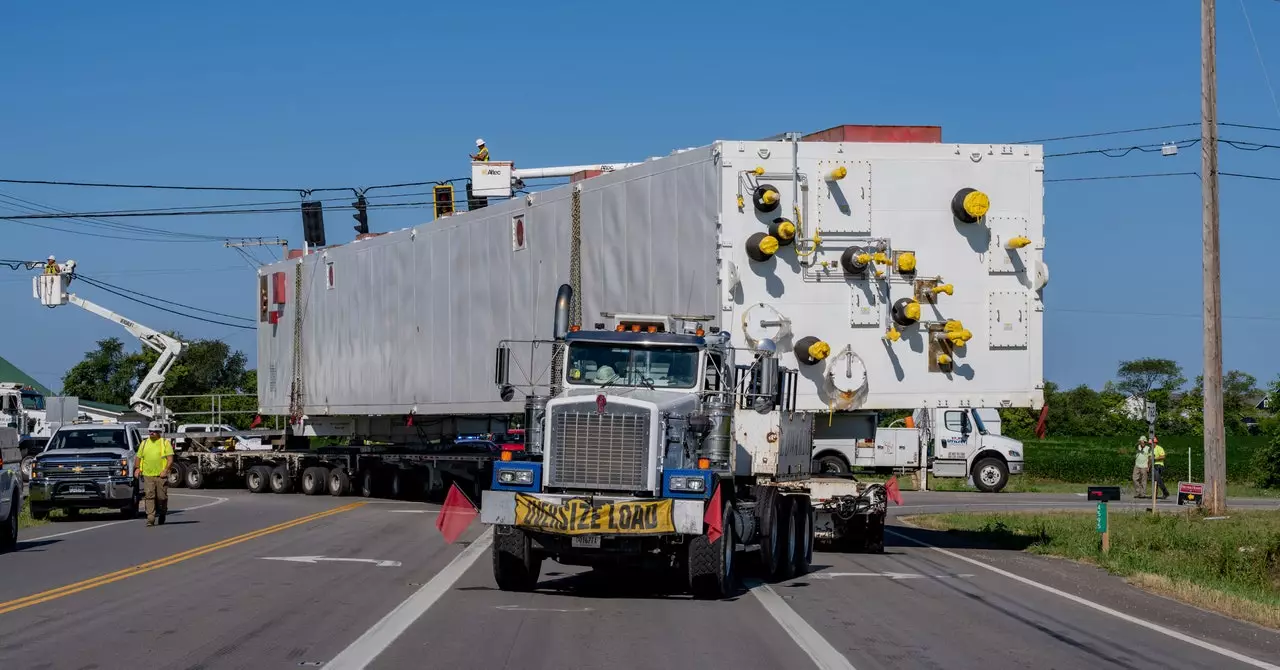The transportation of enormous cargo known as “superloads” is a remarkable feat that intricately weaves the tapestry of engineering, logistics, and community impact. Recently, these massive transports have been making their way across Ohio as part of Intel’s ambitious new project aimed at establishing a research and manufacturing hub for artificial intelligence (AI) chips. Despite their incredible scale, the narrative surrounding superloads is much more than just the machinery; it connects a local community with a global technological revolution.
The journey of the superloads is not a spur-of-the-moment decision; it is the culmination of nearly two years of meticulous planning and coordination among a vast network of stakeholders. Each superload, including the latest one, which stretches an astonishing 280 feet in length and tips the scales at nearly 1 million pounds, requires precise engineering assessments and logistical arrangements. The specificity of the parameters—like height and width—can complicate the route as certain infrastructure, like power lines and traffic lights, may obstruct the path.
Transporting such colossal items means more than merely loading them onto trucks; it involves a coordinated choreography of moving various utilities, engaging law enforcement for traffic management, and securing scores of permits to ensure safety and compliance along the route. The time and effort invested reveal a broader commentary on how advanced manufacturing tends to intersect with local infrastructures and communities.
At the heart of this transportation saga is the “cold box,” an essential apparatus in the air separation unit crucial for microchip production. The precise manufacturing environment necessary for AI chips—cleanrooms—requires stringent controls to eliminate any contaminants. The cold box plays a fundamental role in this process by separating air into its various gaseous components and providing nitrogen to ensure a pure manufacturing atmosphere.
Despite its pivotal role, the term “cold box” feels rather bland in comparison to the magnitude of its function. As four of these hefty pieces of equipment are prepared to be erected at the new Intel site, the local populace is drawn into a narrative where their town becomes an integral part of a global supply chain for cutting-edge technology.
Community Engagement: A Mixed Bag of Emotions
The transport of superloads has illuminated the complexities of community sentiment. Residents closely follow updates on social media platforms, sharing excitement, concern, and curiosity. While some display enthusiasm—for instance, one local woman offered blackberry cobbler to the crew—others are frustrated by the inevitable disruptions to daily life, particularly the traffic snarls these mammoth transports cause.
One notable person in this melting pot of emotions is Emily Stone, affectionately dubbed the “Load Chaser” by her friends. With her camp chair in tow, she sees beyond the logistical challenge; this is a spectacle for her small town, which has not seen anything like this in years. The town of Portsmouth, once a hub for manufacturing, now finds itself on the edge of innovation and nostalgia, reflecting shared histories and changing economic landscapes.
One cannot discuss the current developments without reflecting on Portsmouth’s industrial past. The town, once bustling with factories such as shoe mills and a steel mill, is now witnessing a reinvigoration of industrial activity through the superloads destined for Intel. However, this revival also rekindles memories of a painful history marked by the uranium enrichment plant, which left scars not only on the landscape but on the health of its workers and local residents.
Emily Stone’s activism against the legacy of uranium contamination demonstrates the duality of industrial progress—a new wave of technological advancement raises questions about responsibility, safety, and community welfare. As the superloads rumble through town, they represent not only the excitement of new opportunities but also the reflection on past missteps and the need for accountability.
The story of the superloads crossing Ohio is a rich tapestry—an intricate blend of technology, community involvement, and lingering historical implications. As massive equipment chugs toward a future of AI chip production, residents find themselves at a crossroads, filled with hope, skepticism, and a profound sense of local identity. Future generations will likely look back at this period as a transformative phase, where engineering marvels shaped not only the local economy but also a renewed sense of purpose within a community steeped in its history. The journey of these superloads has just begun, and their impact will undoubtedly resonate for years to come.

